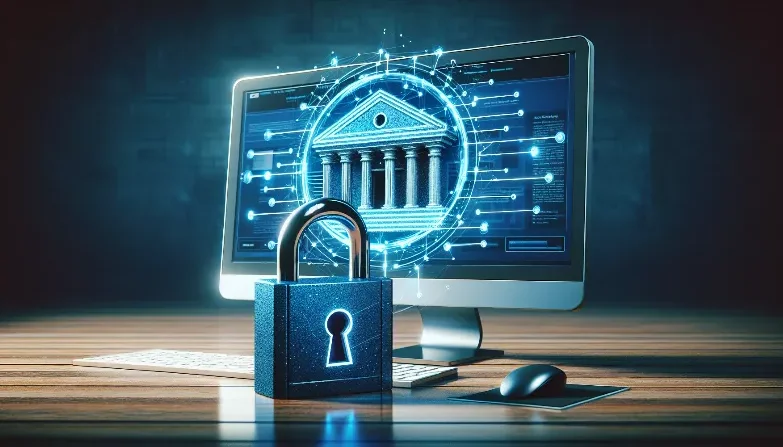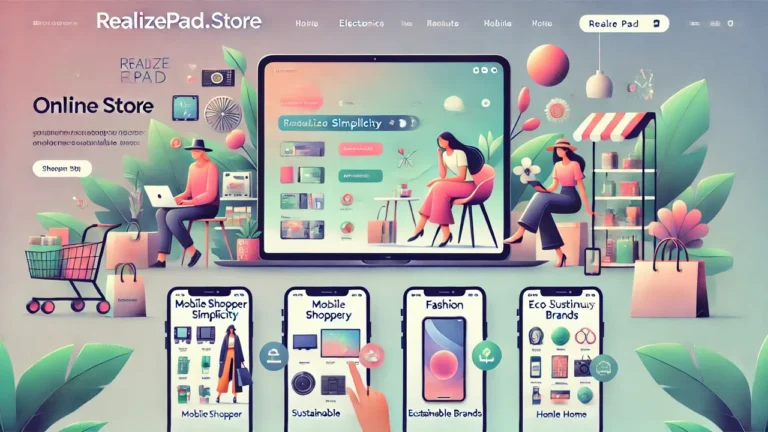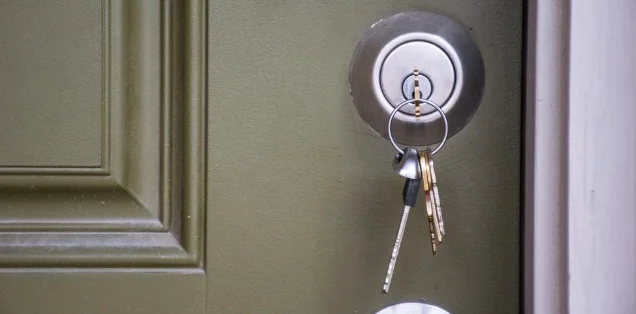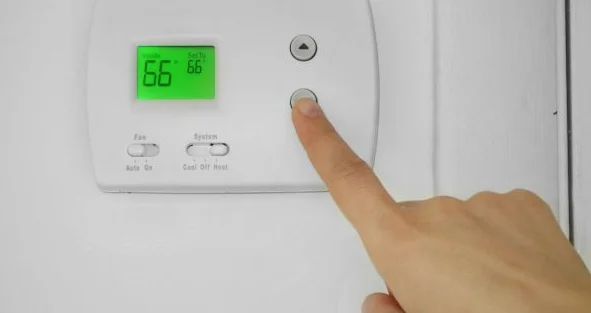How to Secure Your Online Bank Account

Online banking has become a significant part of our daily lives, offering convenience and efficiency in managing our finances. However, with this convenience comes the increased risk of cyber threats, making it crucial to secure your online bank account. In this comprehensive guide, we’ll explore the best practices and strategies to protect your online bank account from unauthorized access and fraud. If you come across a “wuvisaaft” charge on your bank statement, it may be related to a recent transaction or service. For more information, see more.
Why Securing Your Online Bank Account is Important
In the digital age, your online bank account is more than just a gateway to your funds; it’s a treasure trove of personal and financial information. Cybercriminals are constantly devising new ways to steal sensitive data, making it essential to implement robust security measures. Securing your online bank account not only protects your money but also your identity and peace of mind.
Understanding the Risks
Before diving into the security measures, it’s essential to understand the risks associated with online banking. These risks include phishing attacks, malware, identity theft, and unauthorized access to your account. Being aware of these threats is the first step in protecting your online bank account.
1. Phishing Attacks
Phishing is a common cyber threat where attackers pose as legitimate entities to trick you into revealing your login credentials. These attacks usually come in the form of fake emails, text messages, or websites that mimic your bank’s official communication channels.
2. Malware
Malware is malicious software designed to infiltrate your device and steal sensitive information, including your online banking credentials. It can be introduced through infected email attachments, downloads, or compromised websites.
3. Identity Theft
Identity theft occurs when someone gains unauthorized access to your personal information and uses it to commit fraud. This can lead to significant financial losses and long-term damage to your credit score.
4. Unauthorized Access
Unauthorized access happens when someone gains access to your online bank account without your permission. This could result from weak passwords, unsecure networks, or failure to log out of your account on shared devices.
Best Practices to Secure Your Online Bank Account
To safeguard your online bank account, it’s essential to follow best practices that enhance your account’s security. Here are the steps you should take: First, regularly monitor your account for unfamiliar charges, such as those from “50 Beale Street San Francisco,” which could indicate suspicious activity. For more information on these types of charges, you can visit billionfire.com. Additionally, ensure your passwords are strong, enable two-factor authentication, and avoid using public Wi-Fi for sensitive transactions to minimize the risk of fraud and unauthorized access.
1. Use Strong and Unique Passwords
One of the simplest yet most effective ways to secure your online bank account is by using strong and unique passwords. Avoid using easily guessable information like birthdays or common words. Instead, create a complex password that includes a mix of letters, numbers, and special characters.
Pro Tip: Consider using a password manager to generate and store your passwords securely. This way, you can have unique passwords for every account without the need to memorize them all.
2. Enable Two-Factor Authentication (2FA)
Two-factor authentication (2FA) adds an extra layer of security to your online bank account. It requires you to provide two forms of identification before accessing your account, typically something you know (password) and something you have (a smartphone app or SMS code).
Two-factor authentication significantly reduces the risk of unauthorized access, as even if a cybercriminal obtains your password, they would still need the second factor to log in.
3. Keep Your Software Updated
Keeping your software, including your operating system, browser, and banking apps, updated is crucial for security. Updates often include patches for security vulnerabilities that could be exploited by hackers.
Pro Tip: Enable automatic updates to ensure you always have the latest security features.
4. Be Cautious with Public Wi-Fi
Public Wi-Fi networks are convenient but often unsecured, making them a prime target for cybercriminals. Avoid accessing your online bank account over public Wi-Fi. If necessary, use a virtual private network (VPN) to encrypt your connection.
A VPN creates a secure tunnel between your device and the internet, protecting your data from potential eavesdroppers on public networks.
5. Monitor Your Account Regularly
Regularly monitoring your online bank account for any unauthorized transactions or suspicious activity is essential. Set up alerts for any large transactions, changes to your account details, or login attempts.
Pro Tip: Most banks offer mobile alerts that notify you of any unusual activity in real-time, enabling you to take immediate action if necessary.
6. Avoid Clicking on Suspicious Links
Phishing attacks often rely on convincing you to click on malicious links. Always be cautious of unsolicited emails, especially those asking for your login credentials or personal information.
Verify the authenticity of any communication by contacting your bank directly using official contact information, rather than relying on links provided in emails or texts.
7. Log Out After Each Session
Always log out of your online bank account after each session, especially when using a shared or public device. This simple step can prevent unauthorized access if someone else uses the same device.
Pro Tip: Some banking apps offer automatic logout features after a period of inactivity. Make sure this feature is enabled for added security.
8. Use Biometric Authentication
Many modern smartphones and banking apps support biometric authentication, such as fingerprint or facial recognition. These methods are more secure than traditional passwords and add an extra layer of protection to your online bank account.
Biometric data is unique to you, making it nearly impossible for cybercriminals to replicate and gain access to your account.
9. Be Wary of Social Engineering
Social engineering attacks involve manipulating individuals into revealing confidential information. Be cautious of unsolicited phone calls, emails, or messages asking for your banking information.
Pro Tip: Always verify the identity of the person or entity requesting information, and never share sensitive details over the phone or email.
10. Regularly Change Your Passwords
Regularly changing your passwords can reduce the risk of unauthorized access. Set a reminder to update your passwords every few months, and avoid reusing old passwords.
Changing passwords regularly ensures that even if your credentials are compromised, they won’t be useful for long.
The Importance of Device Security
Securing the devices you use to access your online bank account is just as important as securing the account itself. Here are some additional steps to enhance device security:
1. Install Anti-Malware Software
Anti-malware software is essential for protecting your devices from viruses, spyware, and other malicious programs that could compromise your online bank account. Ensure that your anti-malware software is always up-to-date.
2. Enable Firewall Protection
A firewall helps block unauthorized access to your devices by filtering incoming and outgoing network traffic. Make sure your device’s firewall is enabled and configured correctly.
Pro Tip: Use a combination of hardware and software firewalls for maximum protection.
3. Use Encryption
Encryption converts your data into a secure code, preventing unauthorized access. Ensure that your device’s data encryption features are enabled, especially if you store sensitive information or use mobile banking apps.
Encryption is a powerful tool that makes it nearly impossible for cybercriminals to intercept and decipher your data.
Recognizing and Responding to Security Breaches
Despite your best efforts, security breaches can still occur. Knowing how to recognize and respond to these breaches is crucial in minimizing potential damage.
1. Signs of a Security Breach
- Unusual account activity, such as unauthorized transactions.
- Login attempts from unknown devices or locations.
- Changes to your account details that you did not authorize.
- Receiving notifications or alerts from your bank that you didn’t expect.
Pro Tip: Set up multifactor authentication and alerts to detect any unauthorized activity early.
2. What to Do If Your Account Is Compromised
If you suspect that your online bank account has been compromised, take immediate action:
- Change Your Password: Update your password immediately to prevent further unauthorized access.
- Contact Your Bank: Report the breach to your bank’s customer service and follow their instructions.
- Monitor Your Account: Keep a close eye on your account for any further suspicious activity.
- Consider Credit Monitoring: If sensitive information has been exposed, consider enrolling in a credit monitoring service to protect against identity theft.
Educating Yourself and Others
Staying informed about the latest security threats and best practices is vital for maintaining the security of your online bank account. Here are some ways to stay educated:
1. Follow Trusted Sources
Regularly check trusted sources like your bank’s official website, cybersecurity blogs, and government resources for the latest information on online banking security.
Keeping up with the latest trends and threats in cybersecurity can help you adapt and strengthen your online bank account’s defenses.
2. Share Knowledge with Family and Friends
Educate your family and friends about the importance of securing their online bank accounts. Share tips, resources, and encourage them to follow best practices.
Pro Tip: Consider holding a family meeting or workshop to discuss online security and demonstrate how to implement protective measures.
Conclusion
Securing your online bank account is a critical aspect of managing your finances in the digital age. By following the best practices outlined in this guide, you can protect your account from unauthorized access and fraud. Remember, security is an ongoing process, and staying informed and vigilant is key to keeping your online bank account safe.
Last Paragraph with Keyword: Implementing these strategies is essential to ensure the security of your online bank account. Regularly updating your security measures and staying informed about new threats will go a long way in safeguarding your finances.
FAQs
1. How often should I change my online bank account password?
It’s recommended to change your password every 3-6 months to reduce the risk of unauthorized access.
2. What is two-factor authentication, and why is it important?
Two-factor authentication adds an extra layer of security by requiring a second form of verification in addition to your password.
3. Can I access my online bank account safely over public Wi-Fi?
It’s best to avoid accessing your online bank account over public Wi-Fi. If necessary, use a VPN for a secure connection.
4. What should I do if I suspect my account has been compromised?
Change your password immediately, contact your bank, and monitor your account for any suspicious activity.
5. How can I identify a phishing scam?
Phishing scams often involve fake emails or websites that mimic legitimate entities. Always verify the source before clicking on any links or providing personal information.

Nancy Albret is a dynamic blogger for Magzinely.com, exploring a variety of subjects from technological innovations to cultural perspectives. Her writing sheds light on how modern living intertwines with enduring traditions and the newest developments in technology for efficiency and sustainability.






